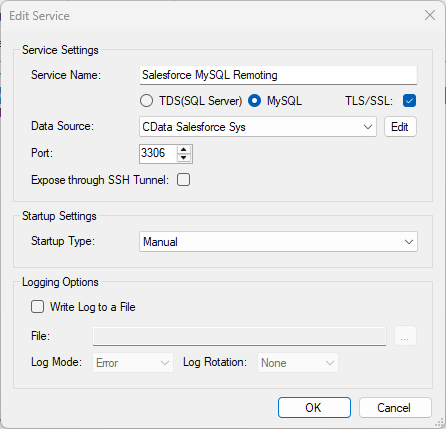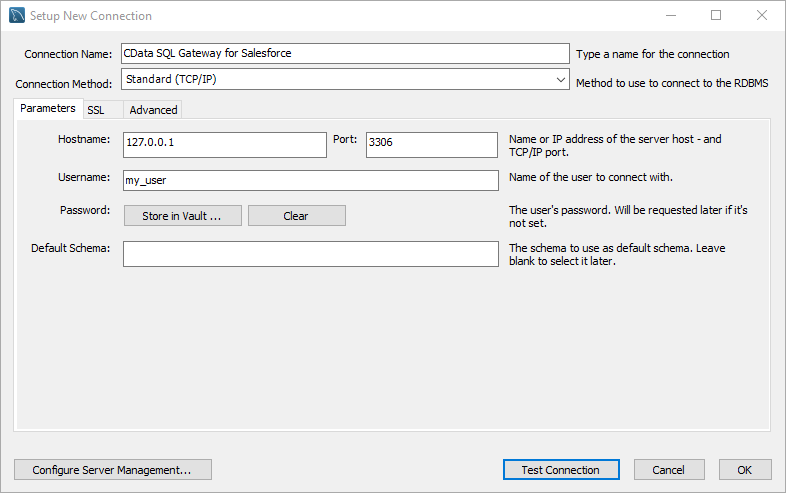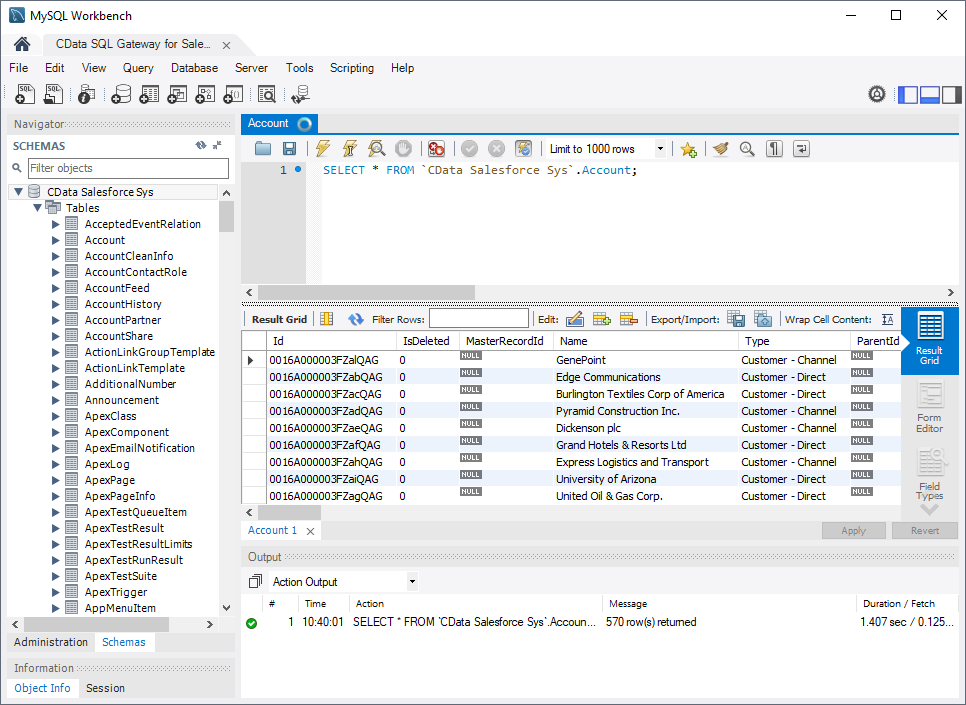Discover how a bimodal integration strategy can address the major data management challenges facing your organization today.
Get the Report →How to Query Snowflake Data in MySQL Workbench
Execute MySQL queries against live Snowflake data from MySQL Workbench.
You can use the SQL Gateway from the ODBC Driver for Snowflake to query Snowflake data through a MySQL interface. Follow the procedure below to start the MySQL remoting service of the SQL Gateway and work with live Snowflake data in MySQL Workbench.
About Snowflake Data Integration
CData simplifies access and integration of live Snowflake data. Our customers leverage CData connectivity to:
- Reads and write Snowflake data quickly and efficiently.
- Dynamically obtain metadata for the specified Warehouse, Database, and Schema.
- Authenticate in a variety of ways, including OAuth, OKTA, Azure AD, Azure Managed Service Identity, PingFederate, private key, and more.
Many CData users use CData solutions to access Snowflake from their preferred tools and applications, and replicate data from their disparate systems into Snowflake for comprehensive warehousing and analytics.
For more information on integrating Snowflake with CData solutions, refer to our blog: https://www.cdata.com/blog/snowflake-integrations.
Getting Started
Connect to Snowflake Data
If you have not already done so, provide values for the required connection properties in the data source name (DSN). You can use the built-in Microsoft ODBC Data Source Administrator to configure the DSN. This is also the last step of the driver installation. See the "Getting Started" chapter in the help documentation for a guide to using the Microsoft ODBC Data Source Administrator to create and configure a DSN.
To connect to Snowflake:
- Set User and Password to your Snowflake credentials and set the AuthScheme property to PASSWORD or OKTA.
- Set URL to the URL of the Snowflake instance (i.e.: https://myaccount.snowflakecomputing.com).
- Set Warehouse to the Snowflake warehouse.
- (Optional) Set Account to your Snowflake account if your URL does not conform to the format above.
- (Optional) Set Database and Schema to restrict the tables and views exposed.
See the Getting Started guide in the CData driver documentation for more information.
Configure the SQL Gateway
See the SQL Gateway Overview to set up connectivity to Snowflake data as a virtual MySQL database. You will configure a MySQL remoting service that listens for MySQL requests from clients. The service can be configured in the SQL Gateway UI.

Query Snowflake from MySQL Workbench
The steps below outline connecting to the virtual Snowflake database created in the SQL Gateway from MySQL Workbench and issuing basic queries to work with live Snowflake data.
Connect to Snowflake through the SQL Gateway
- In MySQL Workbench, click to add a new MySQL connection.
- Name the connection (CData SQL Gateway for Snowflake).
- Set the Hostname, Port, and Username parameters to connect to the SQL Gateway.
- Click Store in Vault to set and store the password.
- Click Test Connection to ensure the connection is configured properly and click OK.
NOTE: When we refer to Username and Password, we mean the credentials for the user(s) created for the SQL Gateway.

Query Snowflake Data
- Open the connection you just created (CData SQL Gateway for Snowflake).
- Click File -> New Query Tab.
- Write a SQL query to retrieve Snowflake data, like SELECT * FROM `CData Snowflake Sys`.Products;

With access to live Snowflake data from MySQL Workbench, you can easily query and update Snowflake, just like you would a MySQL database. Get started now with a free, 30-day trial of the CData ODBC Driver for Snowflake and the CData SQL Gateway.





